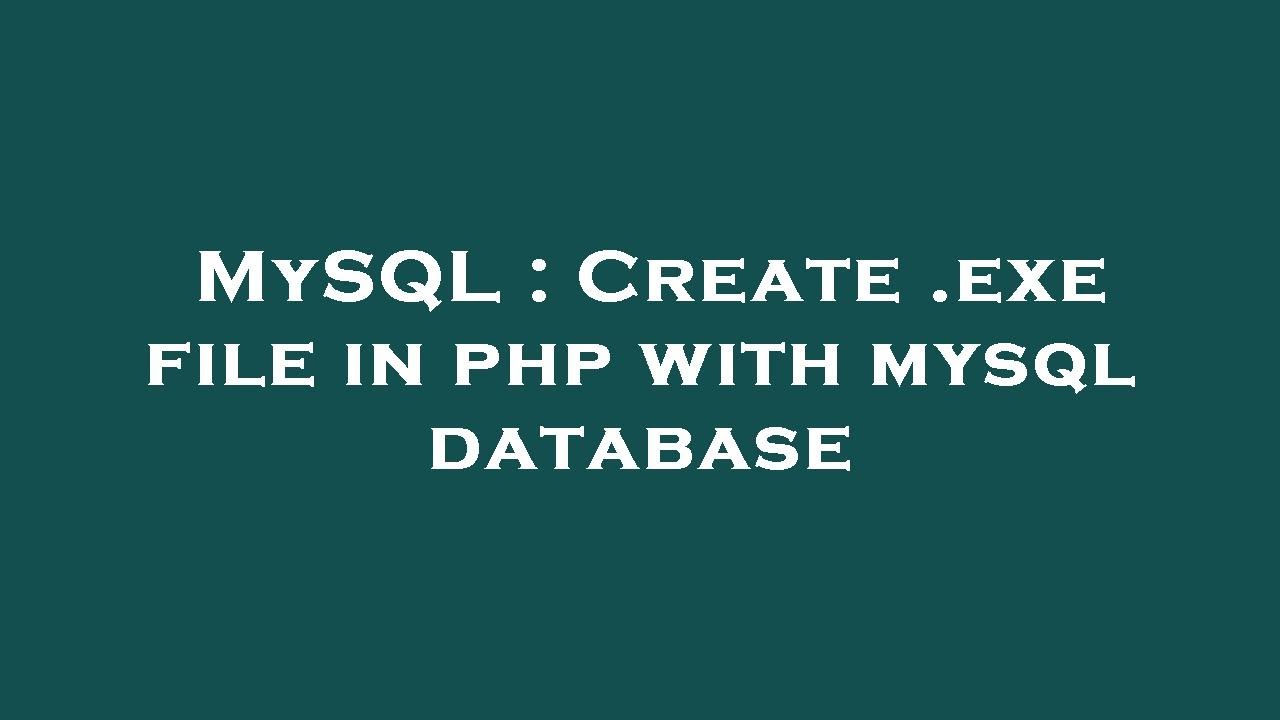Excel to Executable: 5 Easy Steps

In today's digital landscape, software development often involves creating applications that cater to specific user needs. While Microsoft Excel is a powerful tool for data manipulation and analysis, sometimes it's necessary to transform these capabilities into standalone executable files. In this article, we will guide you through a step-by-step process to convert your Excel macros into executable programs, allowing you to distribute and run your solutions effortlessly.
Understanding the Excel to Executable Process

Converting Excel macros into executables is a practical approach for distributing automated tasks, complex calculations, or data-driven processes to users who may not have access to the full Microsoft Office suite. This transformation ensures that your Excel-based solutions can run independently, enhancing their accessibility and usability.
Step 1: Planning and Preparation
Before diving into the conversion process, it’s crucial to plan and prepare your Excel workbook. Here’s what you should consider:
- Macro Security: Ensure that your Excel macros are enabled and trusted. This step is vital, as macros with security restrictions might not function properly in the final executable.
- Workbook Structure: Organize your workbook efficiently. Keep related data and macros together to simplify the conversion process. A well-structured workbook is easier to convert and maintain.
- Data Integrity: Verify that your data is accurate and up-to-date. Any errors or inconsistencies in your data might lead to unexpected behavior in the executable version.
Step 2: Choosing the Right Conversion Tool
There are several tools available for converting Excel macros into executables. One popular option is VBA Project, which offers a straightforward approach to creating stand-alone applications from Excel VBA code. This tool is often included in the Microsoft Office suite, making it easily accessible.
Step 3: Creating the Executable with VBA Project
Once you’ve chosen VBA Project as your conversion tool, follow these steps to create your executable:
- Open VBA Project: Launch VBA Project and select "New Project" from the File menu. This will create a new project environment where you can compile your Excel macros.
- Import Excel Workbook: Use the "Import" function in VBA Project to bring your Excel workbook into the project. This step ensures that all the necessary files and macros are included in the conversion.
- Compile and Configure: Compile your project to ensure that all the components are compatible and error-free. Additionally, configure the output settings, including the executable's name, icon, and other relevant details.
- Build the Executable: With your project compiled and configured, initiate the build process. VBA Project will generate an executable file, ready for distribution and execution.
Step 4: Testing and Debugging
After creating your executable, it’s essential to test and debug it thoroughly. Here’s a quick checklist to ensure your application functions as expected:
- Functionality: Test all the macros and features of your executable to ensure they work as intended. Verify that data is processed accurately and that the user interface behaves as designed.
- Error Handling: Implement robust error-handling mechanisms to handle any unexpected issues. Well-defined error messages can guide users and prevent them from getting stuck in error states.
- User Experience: Pay attention to the overall user experience. Ensure that the executable is intuitive and user-friendly, with clear instructions and feedback.
Step 5: Distribution and Deployment
With your executable tested and ready, it’s time to distribute it to your target audience. Consider these strategies for effective deployment:
- Secure Delivery: Ensure that your executable is delivered securely, especially if it contains sensitive data or proprietary information. Utilize encryption or secure transfer protocols to maintain data integrity.
- User Documentation: Provide clear and concise documentation to guide users through the installation and usage of your executable. This documentation should include troubleshooting tips and contact information for support.
- Version Control: Maintain a robust version control system for your executable. This allows you to track changes, release updates, and provide ongoing support to your users.
Conclusion

Converting Excel macros into executables is a powerful way to share your solutions with a wider audience. By following these five steps, you can transform your Excel workbooks into standalone applications, enhancing their accessibility and usability. Remember, a well-planned and tested conversion process is key to ensuring a successful and reliable executable.
Can I convert Excel macros into executables on a Mac?
+Yes, the process for converting Excel macros into executables is similar on both Windows and macOS. However, you might need to use different conversion tools or adjust the steps slightly based on your operating system.
What are the advantages of creating an executable from Excel macros?
+Creating an executable from Excel macros allows you to distribute your solutions to users who may not have access to the full Microsoft Office suite. It also enhances the accessibility and usability of your Excel-based applications.
Are there any limitations to the Excel to Executable conversion process?
+While the conversion process is generally reliable, there might be certain Excel features or macros that don’t translate perfectly into executables. It’s important to thoroughly test your application to ensure functionality and compatibility.



